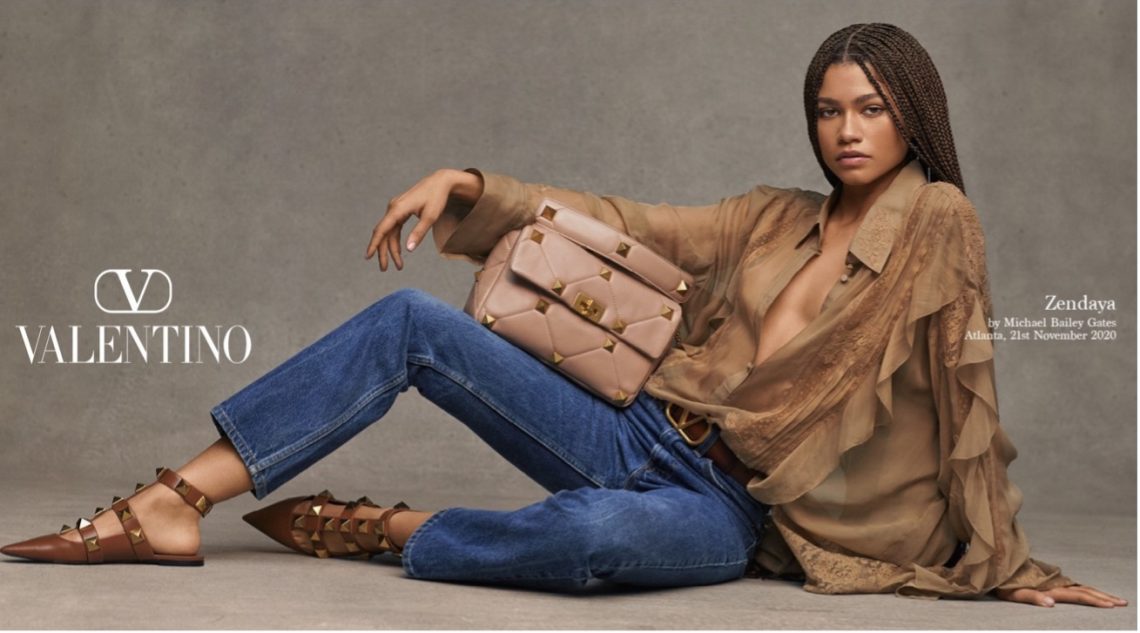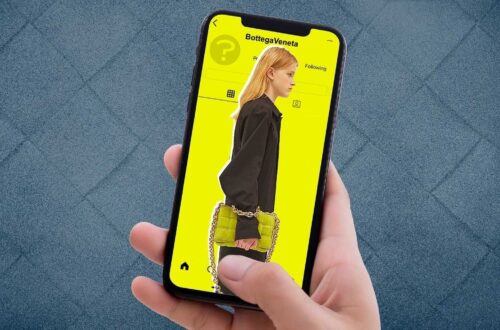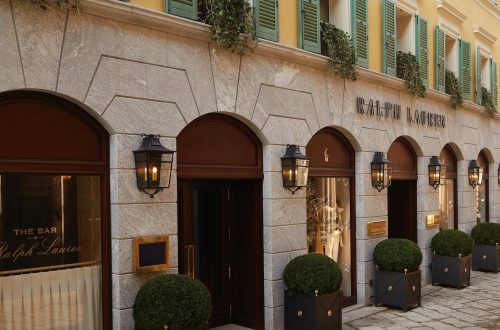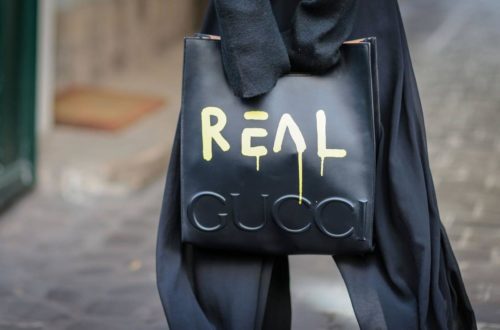Finding a Valentino might be even harder than finding a Valentine after all.
That is because there are two Valentino’s, and telling them apart is anything but easy. The legal battle raging between the two brands is currently unfolding in Italy, as well as in Federal Courts in the US.
The parties
Valentino S.p.A. is an Italian luxury fashion house, founded by Valentino Garavani in 1960, which quickly established as a premier fashion and luxury behemoth for clothing, accessories, and perfumes, among other goods. Valentino handbags typically retail for $1,000 to $4,000-plus, with exclusive or limited editions selling for over $18,000, and they are sold throughout the United States at high-end retailers, including Bergdorf Goodman, Neiman Marcus, and Saks Fifth Avenue.

Mario Valentino S.p.A. was founded in the 1950s in Naples by the homonymous shoemaker, and it subsequently expanded into other leather goods, including handbags. Its products have been commissioned by US First Lady Jacqueline Kennedy Onassis, opera diva Maria Callas, and by actors of the likes of Catherine Deneuve, Marcello Mastroianni and Monica Vitti. It has become a world leader in the manufacturing of leather goods, and its international reputation has grown thanks to collaborations with famous designers Karl Lagerfeld, Giorgio Armani, and Gianni Versace. MV-branded handbags are priced under $1,000 and are sold in the United States primarily, if not exclusively, at off-price retailers such as Century21, Saks Off 5th, and Nordstrom Rack.

The Co-Existence Agreement
Due to their similar names and overlapping goods, the two brands experienced issues of consumer confusion, which can lead to imperfect purchasing decisions, reduced sales and satisfaction with products, and difficulties in communication between the brand and its consumers. Nowadays, a strong brand identity is ever harder to establish, due to the difficulty in differentiating against competitors. Consumer confusion further complicates a brand’s ability to create a differentiable identity, especially as far as e-commerce is concerned.
In order to “avoid public confusion and conflict”, Valentino and Mario Valentino signed a Co-Existence Agreement in 1979, with the purpose of carrying on their businesses without fear of infringing the other’s intellectual property rights. The Agreement involves the use of trademarks, and contains the following restrictions for the parties (in Clause 3):
- Mario Valentino is permitted to use, alternatively, the full name “Mario Valentino” / “M.Valentino” / “Valentino” / “MV” / “V” on the outside of bags, while required to use the full name “Mario Valentino” on the inside and on the packaging of all handbags.
- As for Valentino, the Agreement requires it to use the full name “Valentino Garavani” or “Valentino Couture”, with or without the brand’s specific V-logo, on various types of leather goods including handbags. In other words, the exclusive owner of the “VALENTINO” mark is Mario Valentino S.p.A., which is the senior owner and registrant of the trademarks. The Co-Existence Agreement contains various restrictions on Valentino’s use of its trademarks – e.g., section 6(b) requires that, “in any advertising for its leather handbags, Garavani may only use its symbol and/or the full name “Valentino Garavani”, and therefore must utilize the term “Garavani” in addition to “Valentino” to minimize consumer confusion between the parties”.
The legal battle begins
In 2017, Mario Valentino S.p.A. filed a suit against Valentino S.p.A. for violating the Co-Existence Agreement by using a pattern called “Valentino pattern” (3), as well as the letter “V” in a design that is not the specific “V-logo” (2) on the outside of handbags: the so-called “V-Rockstud” design (1).
The Court of Milan interpreted the Co-Existence Agreement as a way through which the parties regulate the use of their similar trademarks “in good faith”. In a decision dated May 5, 2019, the Court, on the one hand, rejected the extensive interpretation of the Agreement offered by Valentino: in partially upholding the claim brought by Mario Valentino S.p.A., the Court stated that MV is the legitimate and exclusive owner of the letter “V” mark (in any graphical configuration whatsoever), as established by the Co-Existence Agreement. Valentino can only use the letter V in the specific “V-logo” layout, and it is permitted to use the “Valentino pattern”.

On the other hand, in partially upholding the counterclaim brought by Valentino S.p.A, the Court enjoined Mario Valentino from further sale of non-compliant handbags: according to the Court, the actions performed by Mario Valentino S.p.A., in relation to “the marketing of handbags including more than one of the marks mentioned by Clause 3 on the outside, and the failure to apply on the inside and packaging of said products of the full name Mario Valentino” constitute a breach of the 1979 Agreement: using two or more marks together is explicitly prohibited by Clause 3 (as can be inferred from the word “alternatively”).

The first instance Court handed each side a partial victory in the dispute. The case is currently underway in court in Italy: both parties appealed the judgement to Italy’s highest Court (“Court of Cassation”) in May 2021.
The legal fight moves to the US
Shortly after the Italian decision, Maison Valentino took the legal fight with Mario Valentino to the US.
On July 22, 2019, Valentino filed suit in California Federal Court against Mario Valentino S.p.A. and its American handbag licensee, Yarch Capital LLC, alleging that the Defendants are “actively engaging in a campaign to trade off Valentino’s goodwill in the United States handbag market by selling handbags that (i) violate the Co-Existence Agreement, (ii) in many cases, copy the design of Valentino’s design-patent protected bags, and (iii) are advertised and marketed in ways designed to confuse consumers into believing MV handbags are actually Valentino handbags being sold at discount, and/or a diffusion line that retails at lower prices”.
According to the Plaintiff, Mario Valentino’s conducts “have injured Valentino in its commercial reputation and sales, including by misleading consumers to believe that Valentino has entered a lower tier handbag market”. Furthermore, MV and Yarch have willfully and deliberately infringed upon Valentino’s ‘517 and ‘713 patents.

According to Mario Valentino, it is Garavani that has violated 15 U.S.C. § 1125(a)(1)(A) and (B), “by making unauthorized use of MV’s registered trademarks on or in connection with the advertising and sale of goods” (e.g., using the mere name “VALENTINO”). The counterclaims raised by Mario Valentino in response to Valentino’s claims of false association and false advertising are based on the doctrine of reverse confusion: Valentino (the more powerful junior user) is attempting to overwhelm Mario Valentino (the less powerful senior user) in the market. As for the unfair competition claim, MV reaffirmed that it is Garavani’s conducts that violate § 17200 and § 17500 of the California Business and Professions Code, while stating that “Mario Valentino is the real VALENTINO”.
Concerning Valentino’s claims of design patent infringement, Mario Valentino stated that such claims are barred by the on-sale bar doctrine, which is a limitation of patentability in the U.S.: “The product embodied in the ‘713 design patent was advertised, offered and/or sold one year prior to the design patent application date”, meaning that the invention was public for over a year, resulting in the inventor’s loss of all rights. MV also asserted that Valentino’s claims are barred by “obviousness” (35 U.S.C. § 103) and by “prior art” (35 U.S.C. § 102(a)), because of the obvious nature of the design and the pre-existence of look-alikes. Furthermore, MV argued that the ‘517 Patent and the ‘713 Patent “are invalid and unenforceable for failure to comply with one or more of the requirements of Title 35 of the United States Code, including, without limitation, the requirements of 35 U.S.C. §§ 101, 102, 103 and/or 112”. Finally, Valentino has unreasonably delayed efforts to enforce its rights, despite actual knowledge of Mario Valentino’s actions since 2013: “Waiting over 6 years to file a complaint is unreasonable delay and is prejudicial to Yarch and MV”, and “implied consent of the use of these two marks together by the Defendants”. Mario Valentino asserts that the language of the Agreement allows it to use any of its marks, including “V” and “Valentino”, on the outside of leather bags and, indeed, Mario Valentino “has used V and Valentino together for decades without any objection whatsoever by Maison Valentino”.
While awaiting the California Federal Court’s decision, as well as the Italian Supreme Court of Cassation’s sentence, the two brands must comply with the Milan Court’s ruling.
By Anna Zanolli







One Comment
quod.news
I every time emailed this weblog post page to all my contacts, as if like to read it afterward my links
will too.